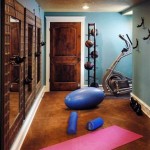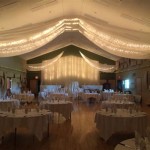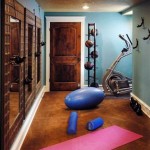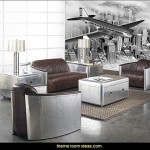Computer Room Decoration Ideas: Optimizing Functionality and Aesthetics
The modern computer room, whether it resides in a home office, a professional workspace, or a dedicated gaming area, is more than just a functional space. It is a location where creativity flows, productivity thrives, and entertainment unfolds. Striking a balance between optimal functionality and appealing aesthetics is crucial for creating a computer room that supports both work and leisure effectively. This demands careful consideration of various elements, including layout, color schemes, furniture, lighting, and organizational systems.
The decoration of a computer room should prioritize the creation of an environment that fosters focus, minimizes distractions, and promotes comfort during extended periods of use. A well-designed computer room can positively impact productivity, reduce stress, and enhance the overall user experience. The process involves thoughtful planning and execution, combining practical solutions with personal preferences to achieve a harmonious and efficient workspace.
Prioritizing Ergonomics and Comfort
Ergonomics plays a pivotal role in preventing strain and discomfort, particularly when spending significant time in front of a computer. The selection of a comfortable and adjustable chair is paramount. Features such as lumbar support, adjustable armrests, and height customization are essential for maintaining proper posture and reducing the risk of musculoskeletal issues. A desk that provides sufficient surface area and can be adjusted to the correct height is also critical. The monitor should be positioned at eye level to prevent neck strain, and the keyboard and mouse should be placed within easy reach to minimize awkward movements.
Consider incorporating ergonomic accessories like a wrist rest for the keyboard and mouse, a footrest to promote proper circulation, and a monitor arm to easily adjust the monitor's position. Regular stretching and short breaks away from the computer are also recommended to prevent stiffness and fatigue. Ensuring adequate ventilation and maintaining a comfortable room temperature also contribute to overall comfort and well-being.
Beyond the purely functional aspects, incorporating elements that promote psychological comfort can significantly enhance the user experience. This might include introducing natural elements like plants, which have been shown to reduce stress and improve air quality. Soft textures, such as a comfortable rug or throw blanket, can also contribute to a more welcoming and relaxing atmosphere. Personalizing the space with items that bring joy or inspiration can further enhance comfort and create a more positive working environment.
Optimizing Lighting for Productivity and Eye Health
Adequate and appropriate lighting is essential for minimizing eye strain and maximizing productivity in a computer room. Natural light is ideal, but artificial lighting is often necessary, particularly during evening hours or in rooms with limited window access. The goal is to create a well-lit environment that is free from glare and shadows. A combination of ambient, task, and accent lighting can effectively achieve this balance.
Ambient lighting provides overall illumination to the room. This can be achieved with overhead fixtures or floor lamps that provide a soft, diffused light. Task lighting is essential for providing focused illumination for specific tasks, such as reading or writing. A desk lamp with an adjustable arm and dimmer switch is ideal for controlling the intensity and direction of the light. Accent lighting can be used to highlight specific features of the room, such as artwork or shelving, adding visual interest and depth.
Avoid placing the computer monitor directly in front of a window, as this can create glare and make it difficult to see the screen. If this is unavoidable, consider using blinds or curtains to control the amount of sunlight entering the room. The color temperature of the lighting is also important. Warmer light (around 2700-3000K) is generally more relaxing and suitable for evening use, while cooler light (around 5000-6500K) is more stimulating and suitable for daytime tasks. Consider using adjustable light fixtures that allow you to change the color temperature depending on the time of day and the task at hand.
Smart lighting systems offer even greater control over the lighting environment. These systems allow you to adjust the brightness, color temperature, and even the color of the lights using a smartphone or voice assistant. This can be particularly beneficial for creating different moods and optimizing the lighting for specific tasks.
Effective Organization and Cable Management
A cluttered and disorganized computer room can be a significant source of stress and distraction. Implementing effective organizational strategies is crucial for maintaining a clean and efficient workspace. This includes developing systems for storing documents, supplies, and other items, as well as managing cables to prevent them from becoming tangled and obstructive.
Shelving units, drawers, and cabinets are essential for storing items that are not frequently used. Open shelves can be used to display books, artwork, and other decorative items, while closed cabinets can be used to conceal clutter. Consider using clear plastic containers to store smaller items, making it easy to see what is inside without having to rummage through everything. Labeling these containers will further enhance organization.
Cable management is often overlooked, but it is essential for maintaining a clean and organized computer room. Cables can quickly become tangled and create a visual mess. Use cable ties, sleeves, or clips to bundle cables together and keep them out of sight. Consider using a cable management box to conceal power strips and excess cable length. Labeling cables can also be helpful for identifying them quickly and easily.
The location of power outlets and network connections should also be considered when planning the layout of the computer room. Ideally, these connections should be easily accessible but also concealed from view. Consider using a surge protector to protect your electronic equipment from power surges. Wireless peripherals, such as keyboards and mice, can also help to reduce cable clutter.
Implementing a daily or weekly cleaning routine can also help to maintain a tidy and organized computer room. This might include wiping down surfaces, vacuuming or sweeping the floor, and decluttering any items that are no longer needed. A clean and organized workspace can significantly improve productivity and reduce stress.
Choosing a Color Palette to Boost Mood and Focus
The color palette of a computer room has a profound impact on mood, focus, and overall productivity. Certain colors are known to promote relaxation and concentration, while others can be distracting or even agitating. Selecting a color scheme that aligns with the room's intended purpose and the user's personal preferences is crucial for creating a supportive and inspiring environment.
Cool colors, such as blues, greens, and purples, are generally considered to be calming and conducive to focus. These colors can help to reduce stress and anxiety, making them ideal for a computer room where concentration is essential. Light shades of blue can create a sense of spaciousness and serenity, while greens evoke feelings of nature and balance. Purple can add a touch of sophistication and creativity.
Neutral colors, such as whites, grays, and beiges, provide a versatile backdrop that can be easily complemented with pops of color. These colors are unobtrusive and can help to create a clean and minimalist aesthetic. White walls can brighten up a room and make it feel more open, while gray provides a more sophisticated and modern look. Beige offers a warm and inviting alternative to white.
Warm colors, such as reds, oranges, and yellows, are energizing and stimulating. However, they should be used sparingly in a computer room, as they can be distracting and overwhelming. A small accent wall or a few colorful accessories can add a touch of vibrancy without disrupting the overall sense of calm. Red is often associated with passion and energy, orange with creativity and enthusiasm, and yellow with optimism and happiness.
Consider the amount of natural light in the room when choosing a color palette. Darker colors can make a small room feel even smaller and more claustrophobic, while lighter colors can help to brighten up a dark room. Test out different color samples on the walls before committing to a full paint job to ensure that you are happy with the results.
In addition to paint colors, the colors of furniture, accessories, and lighting fixtures should also be considered. A cohesive color scheme can create a sense of harmony and balance, while mismatched colors can be jarring and distracting. Choose colors that complement each other and create a visually appealing environment.
Integrating Biophilic Design Elements
Biophilic design focuses on incorporating natural elements into the built environment to improve well-being and productivity. This approach recognizes the innate human connection to nature and seeks to create spaces that are restorative and inspiring. Integrating biophilic elements into a computer room can enhance comfort, reduce stress, and improve cognitive performance.
One of the most effective ways to incorporate biophilic design is to introduce plants into the computer room. Plants not only improve air quality but also add a touch of natural beauty and can help to reduce stress. Choose plants that are easy to care for and that thrive in indoor environments. Some popular options include snake plants, spider plants, and peace lilies. Consider using a variety of plant sizes and textures to create visual interest.
Natural light is another essential element of biophilic design. Maximize the amount of natural light entering the room by keeping windows clean and unobstructed. If possible, position the computer desk near a window to take advantage of the natural light. Using sheer curtains or blinds can help to filter the light and prevent glare.
Natural materials, such as wood, stone, and bamboo, can also be used to create a more biophilic environment. Consider incorporating wood furniture, such as a desk or shelving unit, into the computer room. Stone accents, such as a decorative bowl or a small sculpture, can also add a touch of natural texture. Bamboo flooring or blinds can be another option for incorporating natural materials.
Nature-inspired patterns and textures can also be used to create a more biophilic environment. Consider using wallpaper or fabric with a nature-inspired print, such as leaves, flowers, or landscapes. Textures that mimic natural surfaces, such as wood grain or stone, can also be incorporated into the design.
Even subtle elements, such as natural soundscapes or aromatherapy, can contribute to a more biophilic environment. Consider playing recordings of nature sounds, such as birdsong or ocean waves, to create a relaxing and immersive atmosphere. Using essential oils with natural scents, such as lavender or eucalyptus, can also help to reduce stress and improve focus.
By carefully considering these design elements, a computer room can transform into a space that not only meets functional needs but also promotes well-being and inspires creativity. The key is to prioritize comfort, organization, and aesthetics, creating a harmonious environment that supports both work and leisure.
36 Inspiring Computer Room Ideas To Boost Your Ivity Home Office Setup Design

36 Inspiring Computer Room Ideas To Boost Your Ivity House Design Setup
How To Decorate My Computer Room Quora

10 Study Room Decoration Ideas For Your Home Designcafe

47 Epic Game Room Decoration Ideas You Must See To Know Gamer Decor Dec Rooms Design

82 Computer Lab Decor Ideas Teacher

Spruce Up Your Computer Lab With Chalkboard Decor Around The Kampfire
30 Gamers Home Office Ideas And Designs Renoguide N Renovation Inspiration

36 Inspiring Computer Room Ideas To Boost Your Ivity

36 Inspiring Computer Room Ideas To Boost Your Ivity Game Decor
Related Posts







